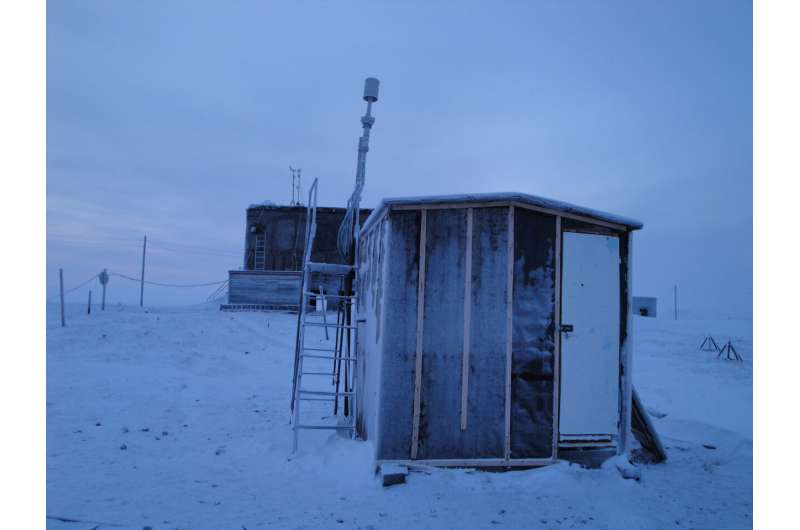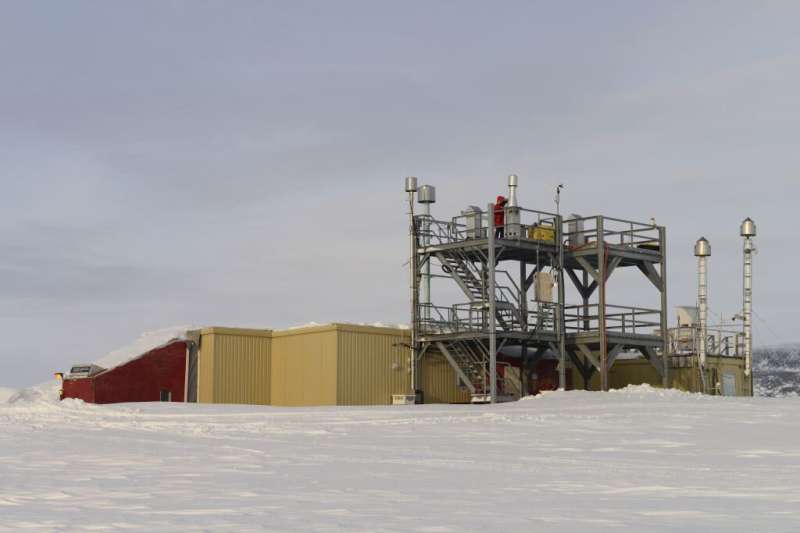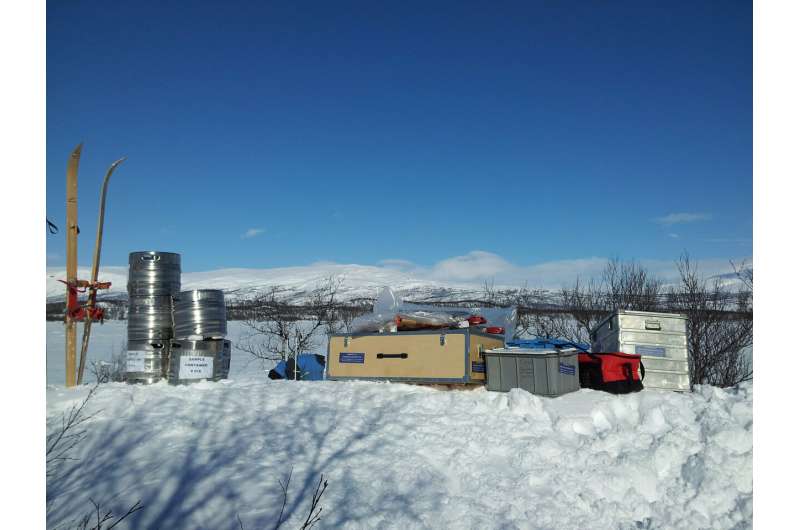February 14, 2019 report
Long term study shows sources of black carbon in the Arctic

An international team of researchers has conducted the most thorough study yet of the sources of black carbon in the Arctic. In their paper published in the journal Science Advances, the group describes their findings and explain why what they found relates to global warming.
While most of the press regarding global warming centers on the release of carbon dioxide into the atmosphere, very little is heard about other man-made activities that are also heating the planet. One such activity is the emission of soot. It comes from factory chimneys, particularly those that burn coal, burning gasoline in car engines, burning fields as part of agricultural efforts, and from other activities that involve burning some type of material.
Because of inefficiencies, some bits of carbon, in the form of soot, make their way into the atmosphere. They do not stay there nearly as long as carbon dioxide does—the problem occurs when they come back down. When it lands on ice in the Arctic, it turns the ice from white to black. Blackened ice absorbs heat, white ice reflects it. Thus, the carbon-covered ice tends to have more surface melting than normal, and there is much less reflection of heat back into the atmosphere. Both contribute to the rapidity of global warming happening in the Arctic compared to other parts of the world.
In recent years, several research efforts have explored the impact of black carbon in the Arctic and sought to ascertain its sources. The researchers with this new effort claim most prior studies have produced unreliable results due to what they describe as "a lack of observational restraints" and less-than-clear emission inventories. To address such problems, the team undertook a five-year study of black carbon in the Arctic, which involved collecting samples from multiple sites and subjecting each to chemical analysis to determine which kind of source it came from.

The team reports that the majority of black carbon in the Arctic (approximately 70 percent) comes from burning fossil fuels, not croplands (or wildfires) as some have suggested. But they also found that the ratios vary by season—during the winter, much more fossil fuel is burned to keep buildings warm. In contrast, most of the crop burning and other types of fires occur in the warmer months.

More information: P. Winiger et al. Source apportionment of circum-Arctic atmospheric black carbon from isotopes and modeling, Science Advances (2019). DOI: 10.1126/sciadv.aau8052
Journal information: Science Advances
© 2019 Science X Network


















